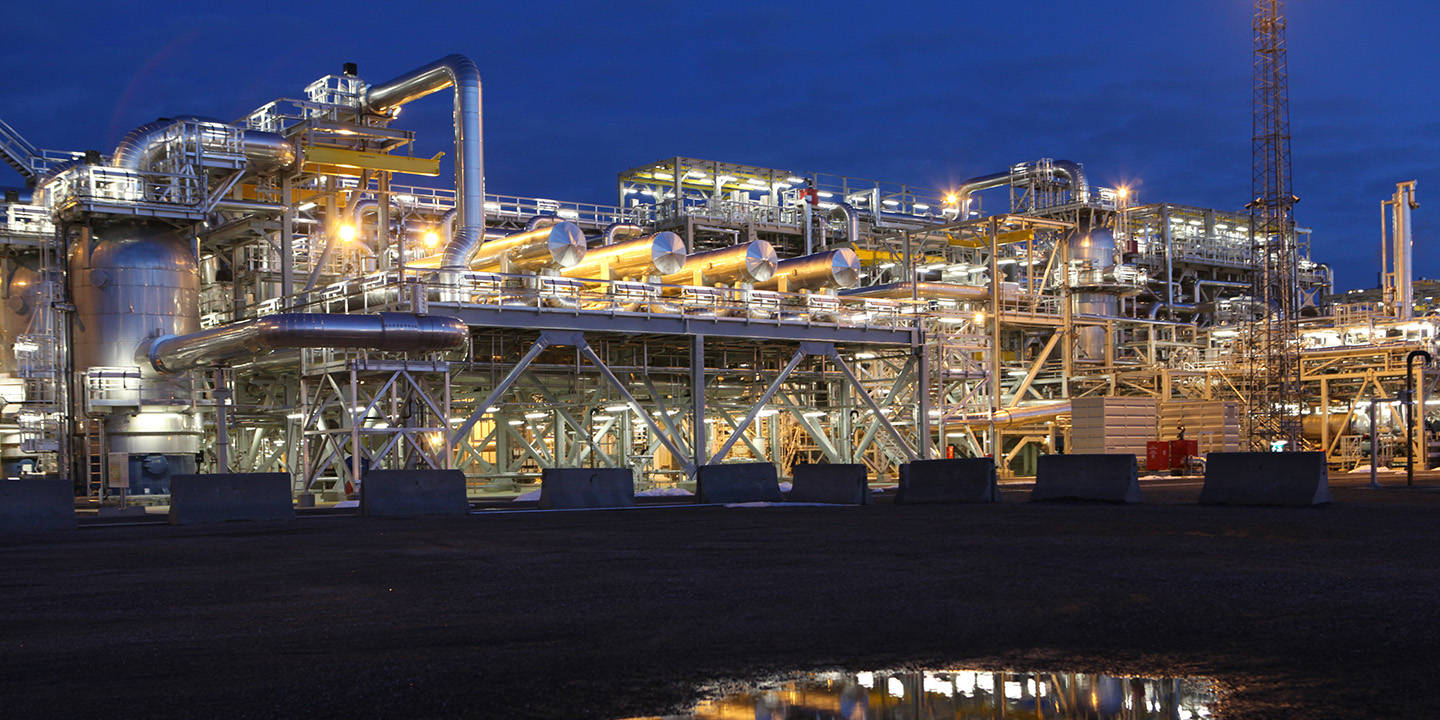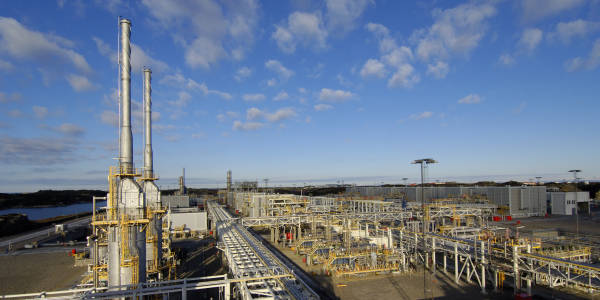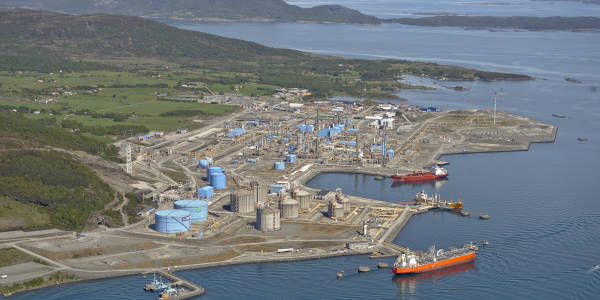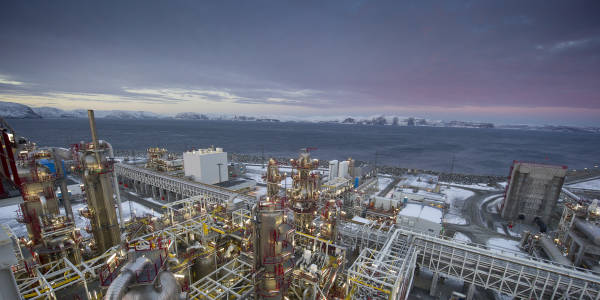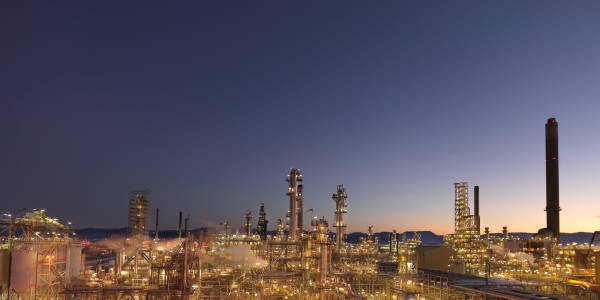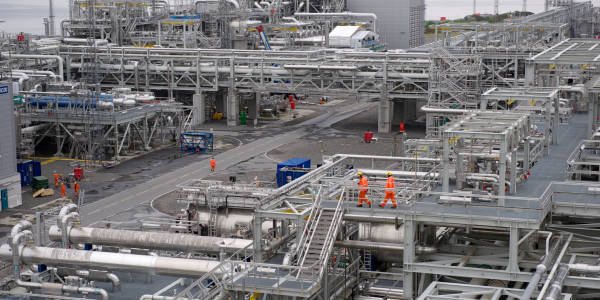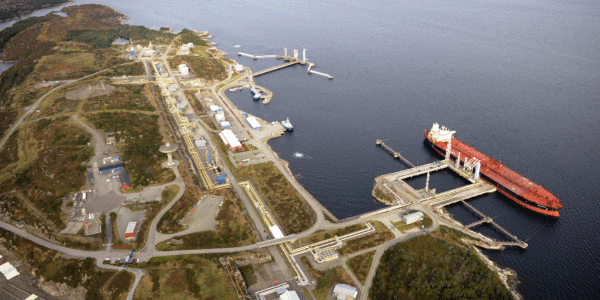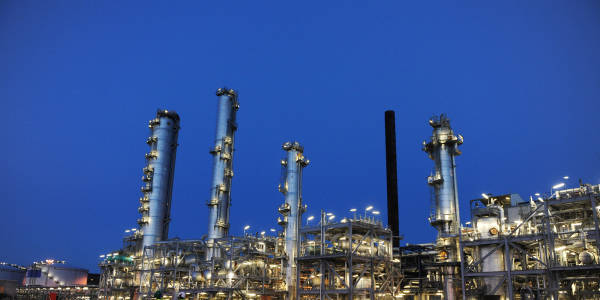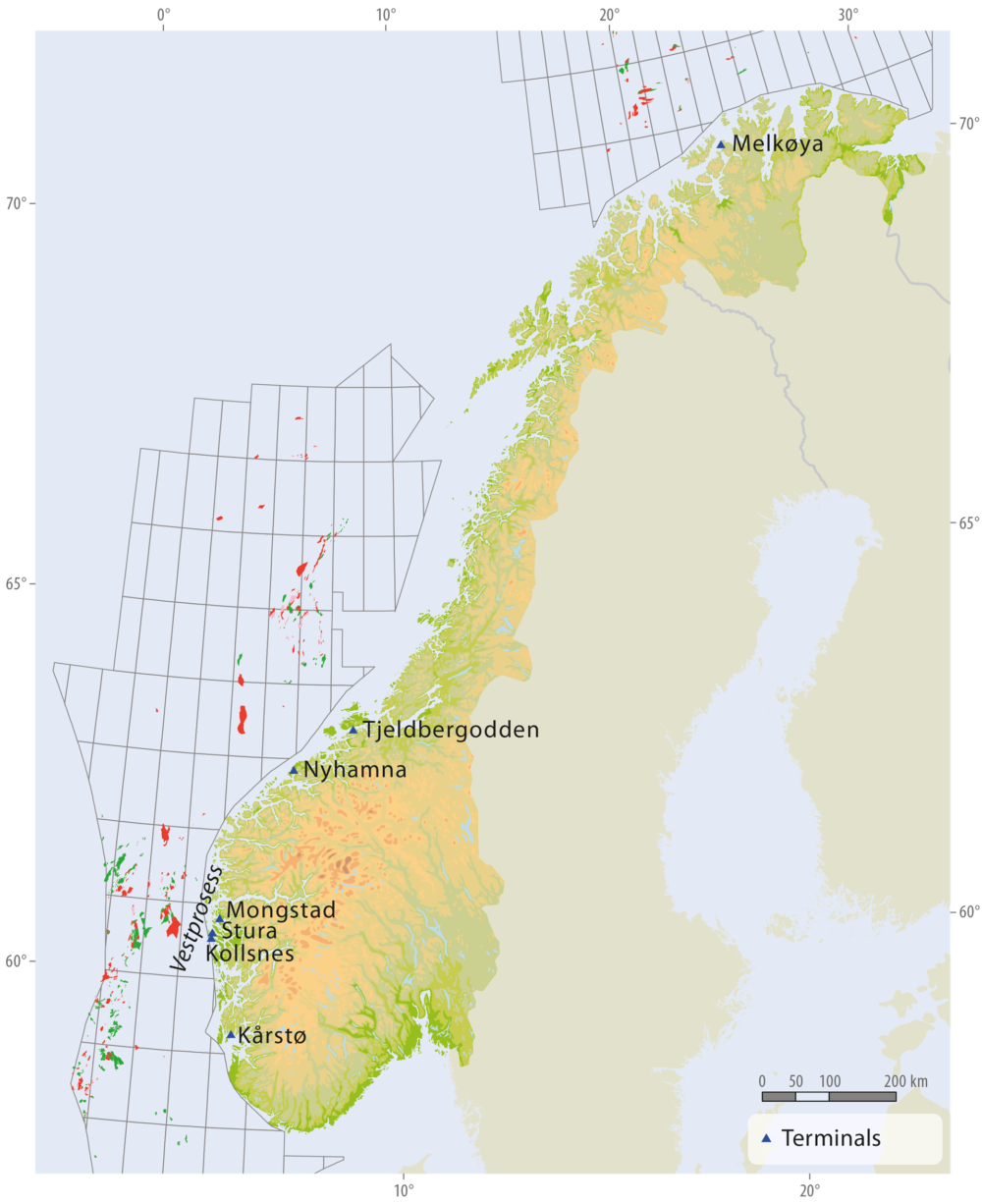Øygarden municipality, Vestland
Kollsnes receives rich gas, which is separated into dry gas and NGL. The gas is dewatered and compressed, then transported by pipeline via the Sleipner and Draupner platforms to continental Europe. The processing plant has a capacity of up to 143 million Sm3 rich gas per day. The export capacity is 143 million Sm3 dry gas per day or about 2.2 million tonnes NGL per year. NGL is transported to Mongstad via the Vestprosess pipeline.
Tysvær municipality, Rogaland
Kårstø receives rich gas and unstabilised condensate (light oil), which are separated into liquid products and dry gas. The dry gas is transported by pipeline to continental Europe. The liquid stream is separated into six different products and is shipped out on special carriers. The plant has a capacity of about 95 million Sm³ rich gas per day, 6.3 million tonnes wet gas per year and about 4.5 million tonnes condensate per year.
Hammerfest municipality, Troms and Finnmark
The unprocessed well stream from Snøhvit is transported through a 143-kilometre-long pipeline to the Melkøya facility for processing and shipping. Onshore, the condensate, water and CO2 are separated from the wellstream before the natural gas is chilled to liquid form (LNG) and stored in dedicated tanks. The pipeline capacity is 7.7 million Sm3 per year. The CO2 separated from the natural gas is returned to the Snøhvit field where it is injected into a formation below the oil and gas reservoirs.
Alver and Austrheim municipalities, Vestland
Mongstad receives and handles crude oil delivered by tanker from a number of fields, including Gullfaks, Statfjord, Draugen, Norne, Åsgard and Heidrun, and is also the terminal for the oil pipelines from Troll B, Troll C, Fram, Kvitebjørn, Valemon, Gjøa and Vega. Mongstad has three jetties that can be used by vessels of up to 400 000 tonnes, and six rock caverns with a total capacity of 1.5 million Sm3 crude oil. The Mongstad site also houses the Mongstad refinery, a combined heat and power plant and the Technology Centre Mongstad (TCM), the world’s largest facility for testing and improving CO2 capture technologies.
Aukra municipality, Møre og Romsdal
The processing plant for gas from Ormen Lange is a conventional facility for dewatering, compression, gas export, separation of condensate, stabilisation, storage and fiscal metering of gas and condensate. The plant was later expanded to be able to receive rich gas from the Polarled pipeline. The pipeline transports gas from the Aasta Hansteen and Dvalin fields, and possible future field developments in the area.
Øygarden municipality, Vestland
Oil and condensate from the fields Oseberg, Veslefrikk, Brage, Oseberg Sør, Oseberg Øst, Tune and Huldra arrive at the Sture terminal via a pipeline from Oseberg A. The terminal also receives oil from the fields Grane, Svalin, Edvard Grieg and Ivar Aasen through the Grane oil pipeline.
The Sture facility includes two jetties that can berth oil tankers up to 300 000 tonnes, five caverns for crude oil storage with a total capacity of 1 million Sm3, one LPG cavern with a capacity of 60 000 Sm3, and a ballast water cavern of 200 000 m3. A fractionation plant processes unstabilised crude from the Oseberg field into stable crude oil and LPG blend.
Aure municipality, Møre og Romsdal
The plant receives gas through the Haltenpipe system totalling about 0.7 billion Sm3 a year. This yields 830 000 tonnes of methanol. The Tjeldbergodden complex also includes an air separation plant. In addition, the company Tjeldbergodden Luftgassfabrikk DA operates a small fractionation and LNG plant with a capacity of 35 million Sm3 per year.
Alver municipality, Vestland
Unstabilised NGL is transported by a 56-kilometre pipeline from the Kollsnes plant via the Sture oil terminal to Mongstad, where it is processed. The first step is separation of naphtha and LPG. Naphtha is used as a raw material in the refinery, and LPG is fractionated in a separate plant. The fractionation products, propane and butane, are stored in caverns for subsequent export.
